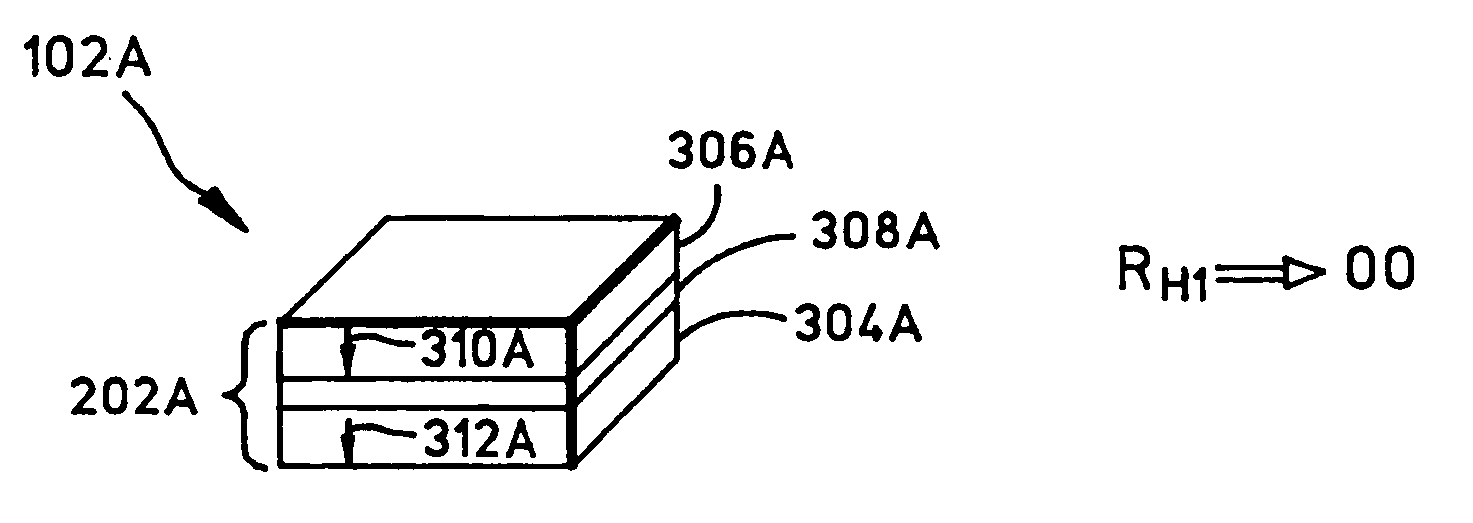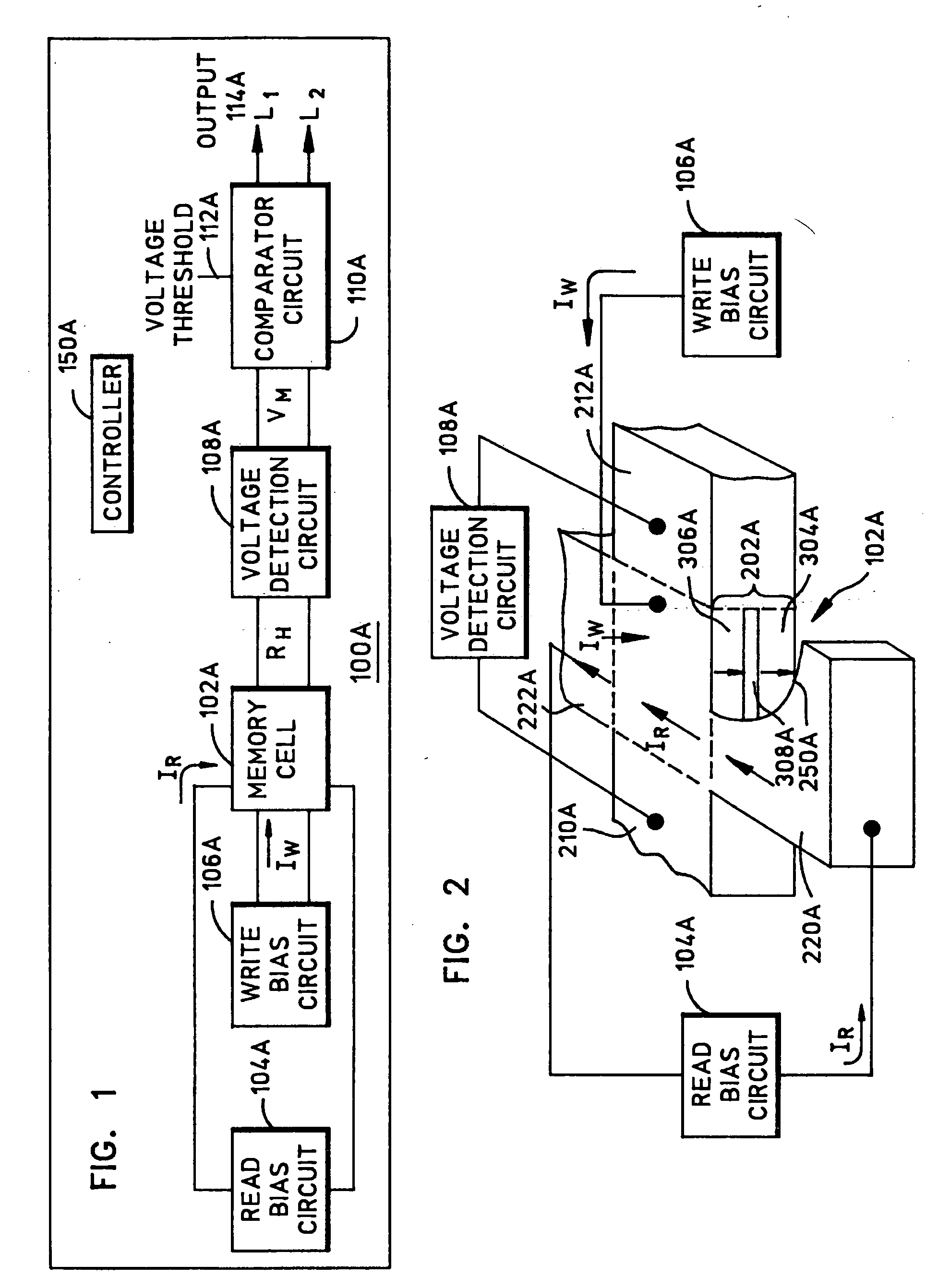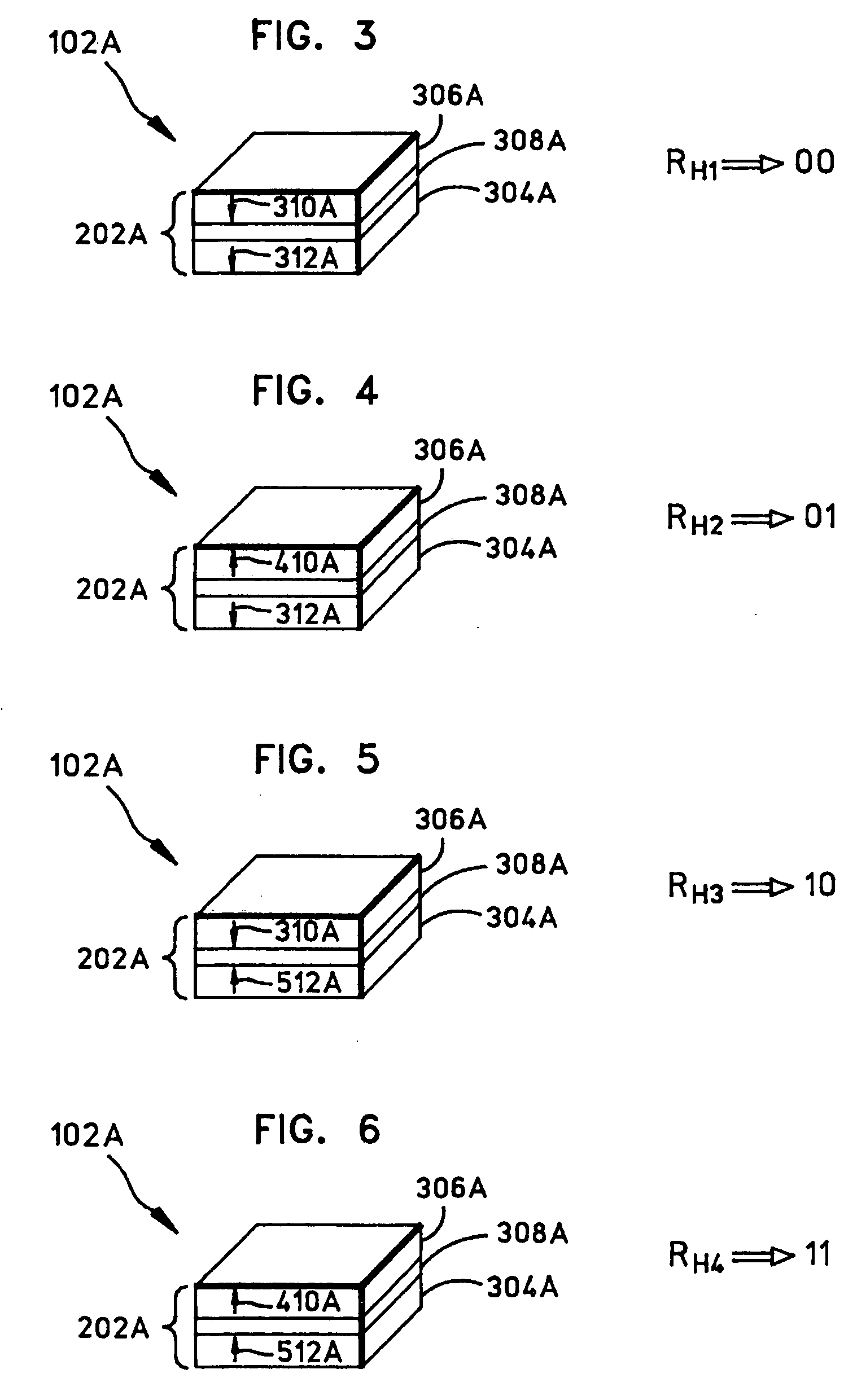Memory cell and programmable logic having ferromagnetic structures exhibiting the extraordinary hall effect
a ferromagnetic structure and memory cell technology, applied in the field of memory devices, can solve the problems of increasing the power dissipation of operation, volatile configuration, loss of contents, etc., and achieve the effect of increasing the data storage capacity
- Summary
- Abstract
- Description
- Claims
- Application Information
AI Technical Summary
Benefits of technology
Problems solved by technology
Method used
Image
Examples
Embodiment Construction
[0031] Memory cell structures of the present application for magnetic random access memory (MRAM) arrays make use of the extraordinary Hall effect for increased data storage capacity. A memory cell has a ferromagnetic structure which includes at least a first ferromagnetic layer, a second ferromagnetic layer, and a spacer layer in between the first and the second ferromagnetic layers. The ferromagnetic layers exhibit perpendicular magnetic anisotropy. The first and the second ferromagnetic layers have magnetic moments lying perpendicular to the planes of the layers which are set in accordance with one of a plurality of magnetic orientation sets of the ferromagnetic structure, and the ferromagnetic structure exhibits one of a plurality of predetermined extraordinary Hall resistances (RH) in accordance with the magnetic orientation set. The extraordinary Hall resistance is exhibited between first and second ends of the ferromagnetic structure across a path which intersects a bias curr...
PUM
| Property | Measurement | Unit |
|---|---|---|
| write bias current | aaaaa | aaaaa |
| write bias current | aaaaa | aaaaa |
| ferromagnetic | aaaaa | aaaaa |
Abstract
Description
Claims
Application Information
 Login to View More
Login to View More - R&D
- Intellectual Property
- Life Sciences
- Materials
- Tech Scout
- Unparalleled Data Quality
- Higher Quality Content
- 60% Fewer Hallucinations
Browse by: Latest US Patents, China's latest patents, Technical Efficacy Thesaurus, Application Domain, Technology Topic, Popular Technical Reports.
© 2025 PatSnap. All rights reserved.Legal|Privacy policy|Modern Slavery Act Transparency Statement|Sitemap|About US| Contact US: help@patsnap.com



